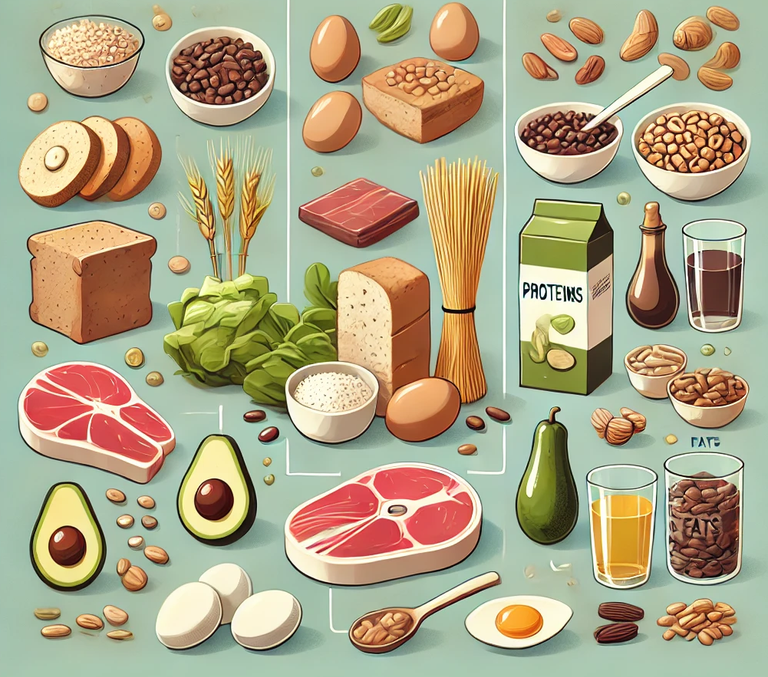
Here’s a comparison table of the minute-by-minute digestion and absorption process for carbohydrates, proteins, and fats:
| Time | Carbohydrates | Proteins | Fats |
|---|---|---|---|
| 0-5 Minutes | Chewing and saliva begin breaking down starches with amylase. | Chewing and saliva start breaking down proteins. Minimal digestion occurs in the mouth. | Chewing breaks fat into smaller pieces; minimal fat digestion in mouth with some salivary lipase. |
| 10-20 Minutes | Stomach acid pauses carb digestion temporarily. | Stomach acid and pepsin begin breaking proteins into smaller peptides. | Stomach churns fat, gastric lipase begins minor breakdown. |
| 20-30 Minutes | Carbs enter the small intestine, where pancreatic amylase resumes digestion, breaking down starches into sugars. | Proteins enter the small intestine; pancreatic enzymes break peptides into amino acids. | Fats enter the small intestine; bile emulsifies fat, and pancreatic lipase breaks it down into fatty acids and monoglycerides. |
| 30-45 Minutes | Enzymes on the intestine wall break down sugars into glucose, fructose, and galactose. | Amino acids and small peptides are absorbed through the intestinal lining into the bloodstream. | Fatty acids and monoglycerides are absorbed in the intestine and form micelles for easier absorption. |
| 45-60 Minutes | Glucose and other sugars enter the bloodstream, stimulating insulin release. | Amino acids circulate in the bloodstream and are transported to the liver for processing. | Fats are reassembled as triglycerides and packed into chylomicrons, entering the lymphatic system. |
| 1-2 Hours | Cells use glucose for energy, and excess is stored as glycogen in liver and muscles. | Amino acids are distributed to cells for tissue repair, muscle synthesis, and enzyme production. | Chylomicrons transport triglycerides through the bloodstream to muscles, fat tissue, or the liver for storage or energy use. |
| 2-4 Hours | Liver releases glycogen as glucose if blood sugar drops; fats or proteins may be used if carbs are depleted. | Ongoing amino acid use for protein synthesis and repair throughout the body. | Liver and cells continue to use or store fats for long-term energy; fats provide sustained energy release. |
| Long-Term | Carbs stored as glycogen in muscles and liver for quick energy; excess converted to fat for long-term storage. | Protein not stored, used for growth, repair, enzymes, and hormones as needed. | Fats stored in adipose tissue for long-term energy and used for hormone production and cell membrane integrity. |
This table highlights the different processes and timelines by which the body digests, absorbs, and utilizes each macronutrient.
Created with assistance from ChatGPT 4.0